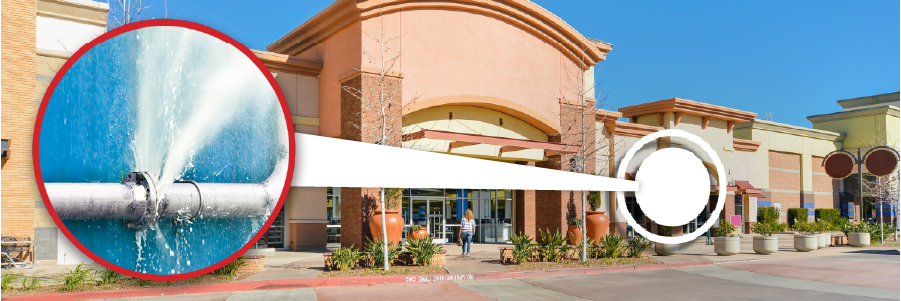
Businesses are some of the largest water consumers (and wasters) — and retail organizations are no exception. The retail industry is among the highest of water consumers — via cooling towers, toilets, landscaping, and food preparation appliances (just to name a few of many). There are numerous ways that retail properties like stores, restaurants, warehouses, and malls are consuming — and inadvertently wasting — a significant amount of water every day.
So, what happens when retail organizations don’t pay attention to their water use, instead of making it a priority to implement smart water management practices? There are several hidden costs of mismanaged water beyond just unnecessary waste.
- Hefty fines and fees
Numerous cities and states in the U.S. enact water restrictions and regulations and not adhering to these can mean paying fines for non-compliance, which often turn into thousands of dollars each month. In addition, organizations can also be fined for runoff pollution, which is usually the result of overwatered landscapes. This runoff carries pollutants such as motor oil, fertilizer, and animal waste into storm drains, which flow untreated into the ocean. - Risks and liabilities
Mismanaged water can be physically and financially dangerous. Falls are the second most costly cause of injury in the workplace, costing U.S. businesses nearly $11 billion each year — and slips and trips cost companies nearly $3 billion per year (Source: Liberty Mutual Workplace Safety Index 2022). These accidents, commonly the result of wet pavement, are the primary cause of lost days of work, costing companies billions of dollars annually, on top of money owed due to lawsuits. Water intrusion, leaks, breaks, and the resulting mold can cause significant damage in any building and often result in legal action. - Brand and reputation damage
When choosing where to shop and who to do business with, a brand’s commitment to sustainability has become increasingly important to consumers. Many customers expect companies to be sustainable in their practices and be clear about exactly how they do this. Don’t underestimate the damage done to an organization’s image when standing water is apparent on landscapes, sprinklers are running during a rainstorm, or when sustainability commitments aren’t clearly outlined by a company. This could make the difference between winning a customer and losing them to another retailer.
Lowe’s wanted to reduce its environmental impact while also increasing the efficiency of its operations. To address these goals, Lowe’s installed HydroPoint® smart irrigation controllers at 939 of their locations. They now conserve 650 million gallons of water annually and an estimated $5 million yearly in total water costs.
Read the full story
- Disruption to operations
A water issue or emergency can create a huge disruption to a business’s daily operations. A leaky roof or flooded bathroom may lead to shutting down a store until it’s resolved. Depending on the scale of the issue, this could be anything from a half-day shutdown to bring in a handyman, to a month-long store closure for construction work to resolve extensive water damage. All of this leads to loss of revenue, loss of pay for employees, and more. - Indoor and outdoor damage
Most issues with landscaping are caused by overwatering. With better water management for landscape irrigation, plant material and hardscape on retail properties won’t need to be replaced as frequently. Overwatering also reduces the life span of asphalt and paved surfaces, leading to more frequent and costly repaving and patching. Additionally, stores can face significant water damage indoors — think of a flooded restroom or a leaking roof leading to an earlier closing time, loss of revenue, and a negative customer experience.
Luckily, smart retailers are stepping up to the plate and doing everything they can to conserve water, and the benefits are numerous. Not only is conserving water environmentally sustainable, it saves retailers money, protects the value of their properties, reduces water-related risks and liabilities, helps them achieve sustainability and ESG goals, and enhances their brand image and reputation.
There are several best practices and smart water management solutons retailers can implement to reduce their water consumption for both indoors and out — using alternative water sources, capturing and reusing rainwater, installing low-flow fixtures, implementing smart irrigation, investing in water-use data and visibility, detecting and resolving leaks, installing green infrastructure, and ensuring cooling towers are running efficiently.
Ready to learn more about how to eradicate water waste and reap the benefits of doing so on your properties? Check out our downloadable guide Sustainability in the Retail Industry: How Top Companies Can Save More Water.

